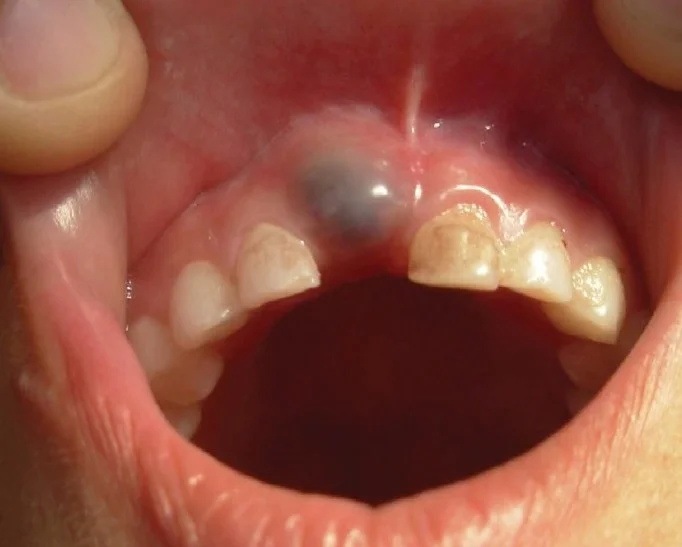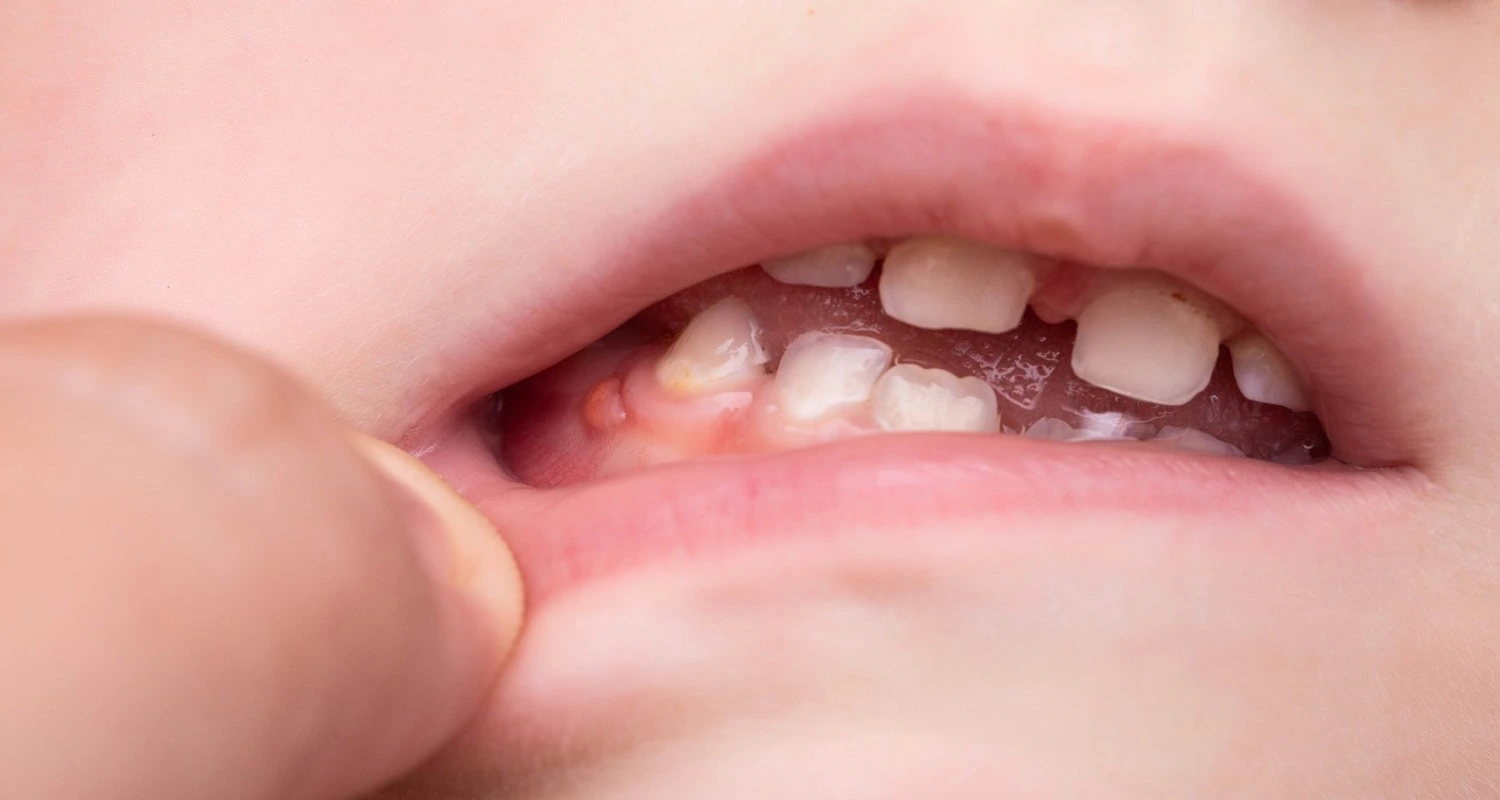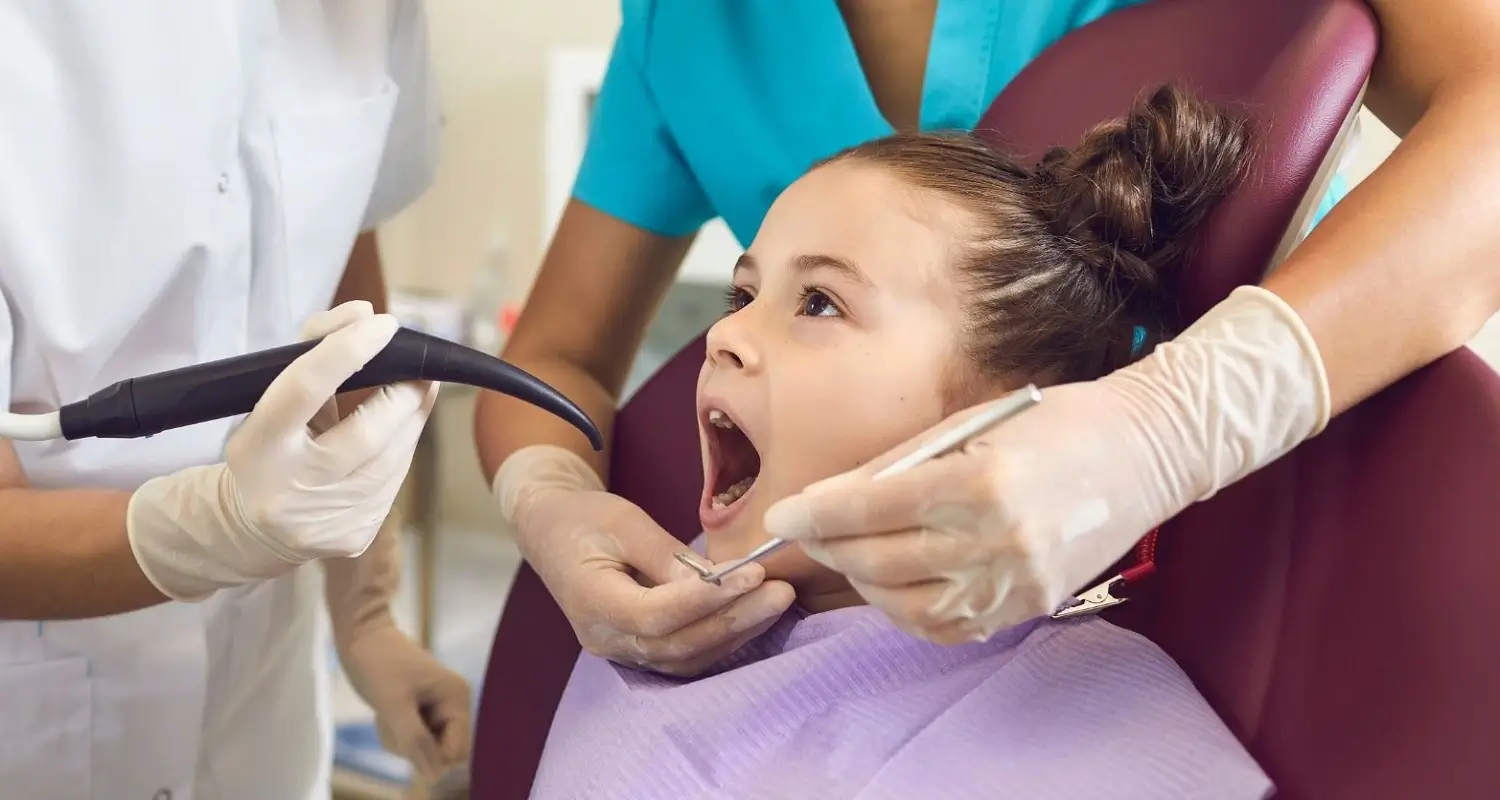Last Updated on: 19th September 2025, 12:51 pm
Treatments for eruption cyst are quite simple and the cysts associated with teething are frequent.
A small transparent or dark-colored bulge in a child’s mouth can be a cause for distress. It is natural for parents to feel concerned when they notice something is wrong with their children’s health.
What is an Eruption Cyst?
Eruption cysts are small, fluid-filled sacs that occur before the emergence of either the primary or permanent teeth. They are usually transparent, although they can also turn purple or black when blood enters the tissue.
They occur more frequently in male children between the ages of 6 and 9. The most common area of appearance is in the lower first permanent molars, especially on the right side.
In this blog, you will find all the information associated with this type of cyst, its causes, and some treatments for eruption cysts.
What Should I do if my Child Develops Eruption Cysts?
Eruption cysts are usually not painful. Normally, parents notice a lump or swelling in the area. There may be pain when biting, but it is not common. Although these eruption cysts do not represent a serious pathology, it is recommended that they be evaluated by a dentist, who will make an adequate diagnosis. This will make sure that it is an eruption cyst and not some other condition.
If it’s an eruption cyst, your dentist might recommend:
• Massages
• Keeping the cyst under observation until the new tooth comes out
When eruption cysts in babies are suspected, the patient should be promptly evaluated by a dentist, who will determine if the teeth are causing the problem and should be kept or removed -as in some cases with natal or neonatal teeth.
What is a Natal or Neonatal Tooth?
Some eruption cysts occur from natal or neonatal teeth, but what are natal and neonatal teeth? These teeth come out before their time as babies. They are called natal when the baby has them in their mouth at birth, and neonatal when they come out in the first days of life.
Sometimes, they are not the teeth that will come out in the future, but extra teeth, which can be unstable or mobile. It is recommended to extract them to avoid bronchial aspiration.
What are the Treatments for Eruption Cyst?
According to the guidelines proposed by the American Academy of Pediatric Dentistry for eruption cysts, they only require treatments for eruption cyst if they incur:
• Pain: Generally at the time of eating.
• Infection: Severe inflammation, suppuration, fever, or general malaise.
When this happens, the dentist will make a small cut through the gums, freeing the crown of the tooth and facilitating its eruption.
However, in a study carried out in 2017, 53 patients with eruption cysts were included, of which only 7 required surgical treatment. In most children, the tooth erupted between 15 and 90 days after being examined, and the cyst disappeared satisfactorily. Hence, the treatments for eruption cyst were not completed necessary.
Conclusion
Eruption cysts appear as a fluctuating swelling in the area where a tooth should erupt. In most patients, they do not present a problem, since a few days after the tooth erupts, the cyst disappears.
However, when this does not happen, the dentist may choose to make a small cut in the gums to allow the tooth to come out. Although it is not a serious pathology, it is recommended that children be regularly evaluated by a dentist to make a proper diagnosis and prevent complications. In that way, the best treatments for eruption cyst is to be careful and have a proper oral hygiene.
Frequently Asked Questions
What is a dental eruption cyst?
Dental eruption cysts are small fluid-filled sacs that appear on the gums before the eruption of primary or permanent teeth. They can be transparent or may appear purple or black if there is blood within the tissue.
How can I tell if my child needs treatment for a dental eruption cyst?
Generally, eruption cysts are not painful and are detected by observing a swelling in the gums. Although they are usually not serious, it is advisable for a dentist to evaluate the situation to confirm their nature and rule out other conditions.
What are natal and neonatal teeth?
Natal teeth are those present in a baby’s mouth at birth, while neonatal teeth emerge within the first few days of life. These teeth can be unstable and sometimes need to be extracted to prevent complications such as choking.
What is the recommended treatment for a dental eruption cyst?
In most cases, eruption cysts disappear on their own once the tooth erupts. However, if there is pain or signs of infection, such as severe swelling or fever, the dentist may make a small incision in the gum to facilitate the tooth’s eruption.
Is it common for dental eruption cysts to require surgical intervention?
No, it is uncommon. A 2017 study found that out of 53 patients with eruption cysts, only 7 required surgical treatment. In most cases, the teeth erupt naturally, and the cyst resolves without the need for additional intervention.
Share:
References
1. Specialists, D. I. (Nov 16, 2022). Eruption Cysts | What You Need To Know. Dental Implant & Specialist Centre. https://goldcoastimplantspecialist.com.au/news/eruption-cysts-what-you-need-to-know/
2. Şen-Tunç, E., Acikel, H., Sonmez, I. S., Bayrak, S., & Tüloğlu, N. (Mar, 2017). Eruption cysts: A series of 66 cases with clinical features.Oral medicine, oral pathology and oral surgery, 22(2), e228–e232. https://doi.org/10.4317/medoral.21499
3. Nagaveni, N. B., Umashankara, K. V., Radhika, N. B., & Maj Satisha, T. S. (Ene, 2011). Eruption cyst: a literature review and four case reports. Indian journal of dental research : official publication of Indian Society for Dental Research, 22(1), 148–151.
4. Council, O. (2015). Guideline on management considerations for pediatric oral surgery and oral pathology. Am Acad Pediatr Dent, 37(6), 279-288.
5. de Oliveira, A. J., Silveira, M. L., Duarte, D. A., & Diniz, M. B. (Ene, 2018). Eruption Cyst in the Neonate. International journal of clinical pediatric dentistry, 11(1), 58–60. https://doi.org/10.5005/jp-journals-10005-1485
6. Bilodeau, E. A., & Hunter, K. D. (Mar 15, 2021). Odontogenic and Developmental Oral Lesions in Pediatric Patients. Head and neck pathology, 15(1), 71–84. https://doi.org/10.1007/s12105-020-01284-3
-
Nayibe Cubillos M. [Author]
Pharmaceutical Chemestry |Pharmaceutical Process Management | Pharmaceutical Care | Pharmaceutical Services Audit | Pharmaceutical Services Process Consulting | Content Project Manager | SEO Knowledge | Content Writer | Leadership | Scrum Master
View all posts
A healthcare writer with a solid background in pharmaceutical chemistry and a thorough understanding of Colombian regulatory processes and comprehensive sector management, she has significant experience coordinating and leading multidisciplina...


















